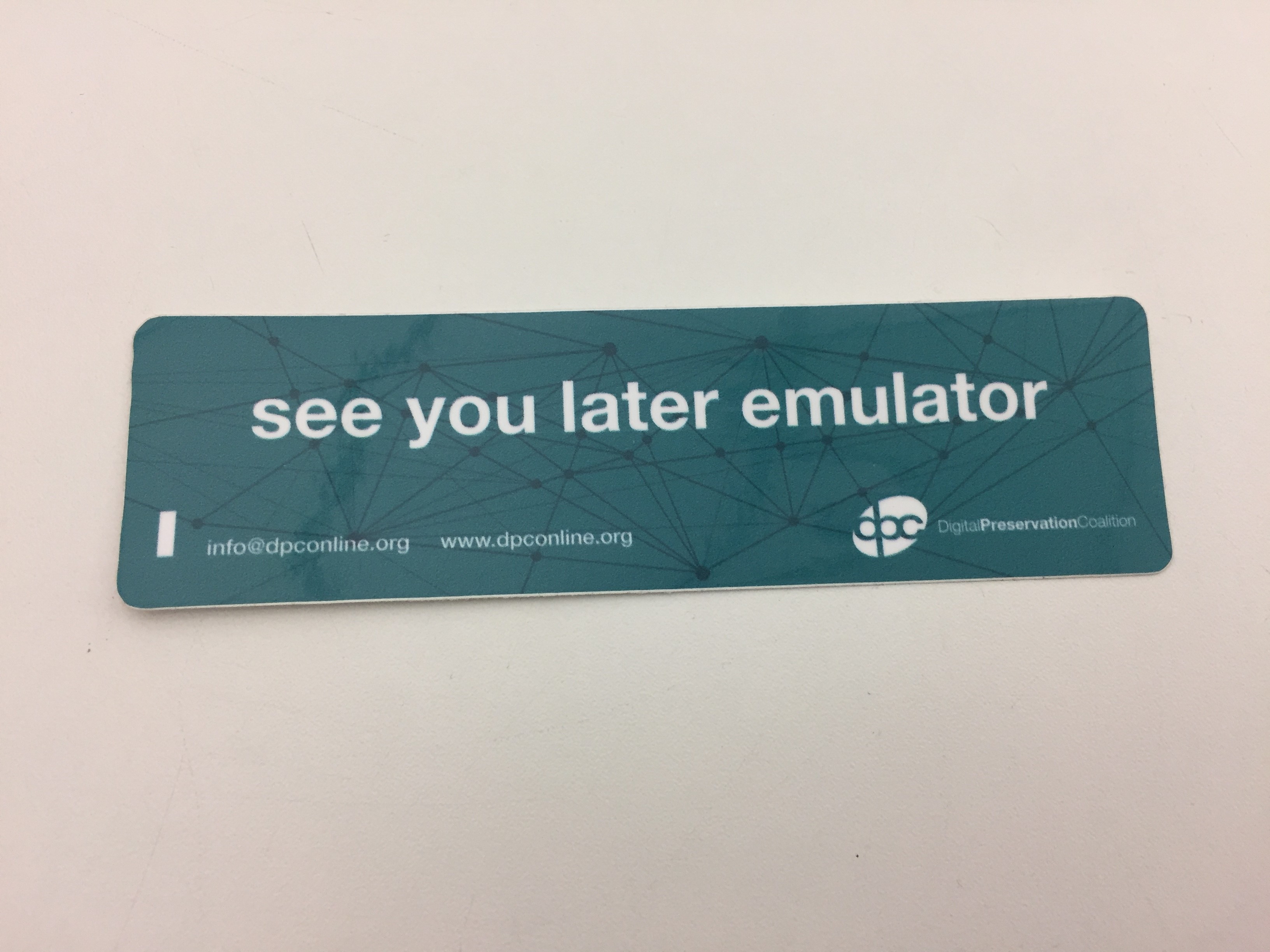Elisabeth Thurlow is Digital Archives and Collections Implementation Manager at the University of the Arts London. She attended iPres2019 with support from the DPC's Career Development Fund which is generously funded by DPC supporters.
Emulation has a long history. So why has it taken so long to get emulation off the ground as a strategy for digital preservation? For many of us working in the field of digital preservation, emulation has often appeared a highly technical and ambitious task.
The longstanding assumption around emulation is that it is simply too hard – too hard to grasp and even harder to undertake. I admit to thinking that myself. Emulation is often presented as an opponent of migration – another fundamental and more widely adopted strategy for digital preservation. But as we combat the preservation of increasingly complex digital objects, we may need to adopt and combine multiple strategies.
I received a scholarship from the DPC, which supported me to attend the recent iPres conference in Amsterdam. To embrace one of the conference themes of ‘Exploring New Horizons’, I set myself a challenge: attend a session on emulation and feedback via this blog. I saw this as a great opportunity to help me to begin to get my head around what had until now seemed like a hugely technical, and at times intimidating, area of research and discovery. But I was happily surprised to find that we are now seeing a version of emulation being presented that is more user friendly and therefore easier to comprehend.
Towards a Universal Virtual Interactor
The session began with a potted history of emulation to date. Speakers admitted that previous projects were not scalable and were overly complicated, with Intellectual Property Rights proving a further challenge. But the potential offered was transformative. The projects taking place today build on years of previous work. Recent attempts to rebuild emulation as more user friendly mean emulation is now finally becoming more accessible as a strategy for digital preservation.
First up was Euan Cochrane from Yale University Library, outlining the move towards a Universal Virtual Interactor (UVI). The UVI, which Euan outlined in a previous blog post, aims to match digital objects to their configured computing environments automatically. To support both functionality and authenticity, the UVI will match them to the best available environment, benefitting from Yale’s access to a vast library of software.
Euan provided a demonstration of the UVI, which has been called an Interactor, as it will go beyond basic viewing or rendering. The UVI offers users the option to open and interact with a file in its original software, offering an interactive digital object experience. In a way which is as close to the original experience as possible.
As well as being increasingly user-focused, more recent work on emulation offers the ability to scale access. Looking ahead, those involved in this work are also considering how emulation be used elsewhere, in different legal contexts.
Emulation in the library
In the same session, we also heard from Tobias Steinke from the Deutsche National Bibliothek, who addressed the practical use of emulation in libraries. At their library in Berlin they are exploring whether emulation could be a functional tool in a library setting.
Tobias demonstrated a use case where they have been experimenting with how they can provide access to multimedia objects, using Emulation as a Service (EaaS). As these selected objects are software publications, migration is not really an option. Emulation is allowing them to provide access within a web browser, via a link within the library catalogue. Although this service is limited to local access only, it is now running for a small number of digital objects.
“authentically slow”
Emulation has always been heavily technical. And although behind the scenes this is still the case, all speakers in the Cutting Edge: Emulation session demonstrated a real focus on the user experience. For me, this shift in focus feels like a significant and exciting movement. For an emulation service to be successful, it will need to be scalable and therefore useable for masses of objects. Future development already identified will include increasing processing speeds to overcome the current “authentically slow” experience. I look forward to hearing more as emulation becomes even more accessible.











































































































































